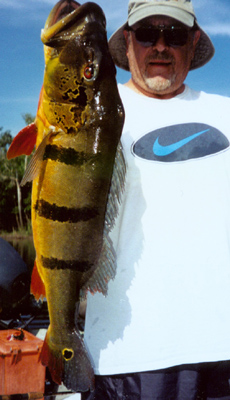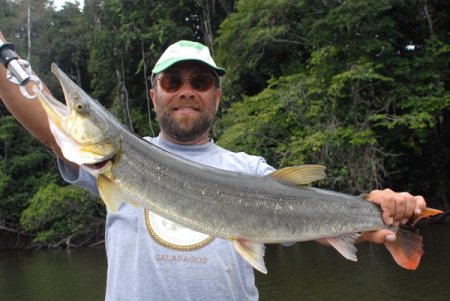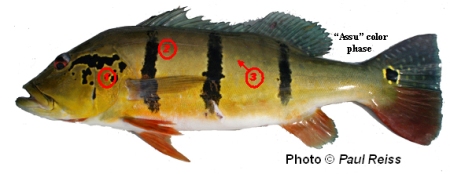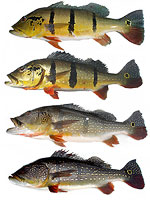Our “Fish of the Week” is Catfish – Sorubim, which is a beautiful species sporting an elegant pattern of hieroglyphic black markings on a silver grey background dorsally and stark white ventrally. The common name sorubim is used for several similarly shaped species in the genus. Body markings, typical habitat and maximum size differ. P. tigrinum is commonly encountered by anglers in Amazon lowland, highland and Guyana shield fisheries.
The Sorubim is distinguished by its flattened head, elongate body and large terminal mouth. Its silvery gray upper body with heiroglyphic markings dorsally, and tiger stripes laterally, also set it apart. Sorubim’s fin markings continue from the body, evolving into spots toward margins. The silver gray on its dorsum changes abruptly to white on its ventral sides, as well as its abdomen. Specimens up to one meter in length and more than 100 pounds have been reported. The genus contains eight recognised species, and although all are similarly elongate, many are uniquely marked and have separate ranges. Common names include Barred Shovelnose (English); sorubim, suribim, cachara (local); and Bagre rayado.
This catfish can be found in Brazil, Peru, Guyana, Ecuador, Bolivia, Suriname, Columbia, Venezuela and Argentina, particularly in the Amazon, Orinoco, Essequibo, Corantijn and Parana drainages and river basins. They usually occupy lotic (moving water) environments in blackwater river systems. Primarily feeding on fishes, P. fasciatumis are readily encountered with cut bait on shallow sandbars in river channels. Although mostly an evening and nocturnal feeder, anglers are often surprised by large sorubim attacking artificial lures in open water at any time of day. The current IGFA record is 35 pounds, 10 ounces.
In addition to being a great angler’s target, the barred sorubim is a pleasant adjunct to any fishery. Its habit of attacking artificial lures and then fighting like whiskered tuna, makes it endearing to peacock bass anglers and catfishermen alike. In most high gradient fisheries sorubim can be targeted by anglers at evening time. They tend to congregate and forage at the edges of shallow beaches with nearby drop-offs to deeper water. Small live bait or pieces of cut bait are equally effective when cast onto the beach and allowed to drift naturally to the nearby drop-off. An effective rig consists of a 10/0 to 14/0 circle hook (or smaller J hook) with a wire leader and relatively light sinker (approx. 1 oz.), enough to keep it down while still allowing the current to slowly carry it. The take is usually quite forceful. Once hooked, sorubim will fight in open water with strong runs and surprising stamina.
Pintado – Psuedoplatystoma corruscans – up to 1.5 meter
This larger catfish is found outside the Amazon in the Pantanal and the Sao Francisco and Parana river basins
(Illustration from “Peixes do Pantanal” – Embrapa – poster)
Acute Angling – Official Website
Tackle-Box.net
Facebook
Twitter
LinkedIn
YouTube
Photos











